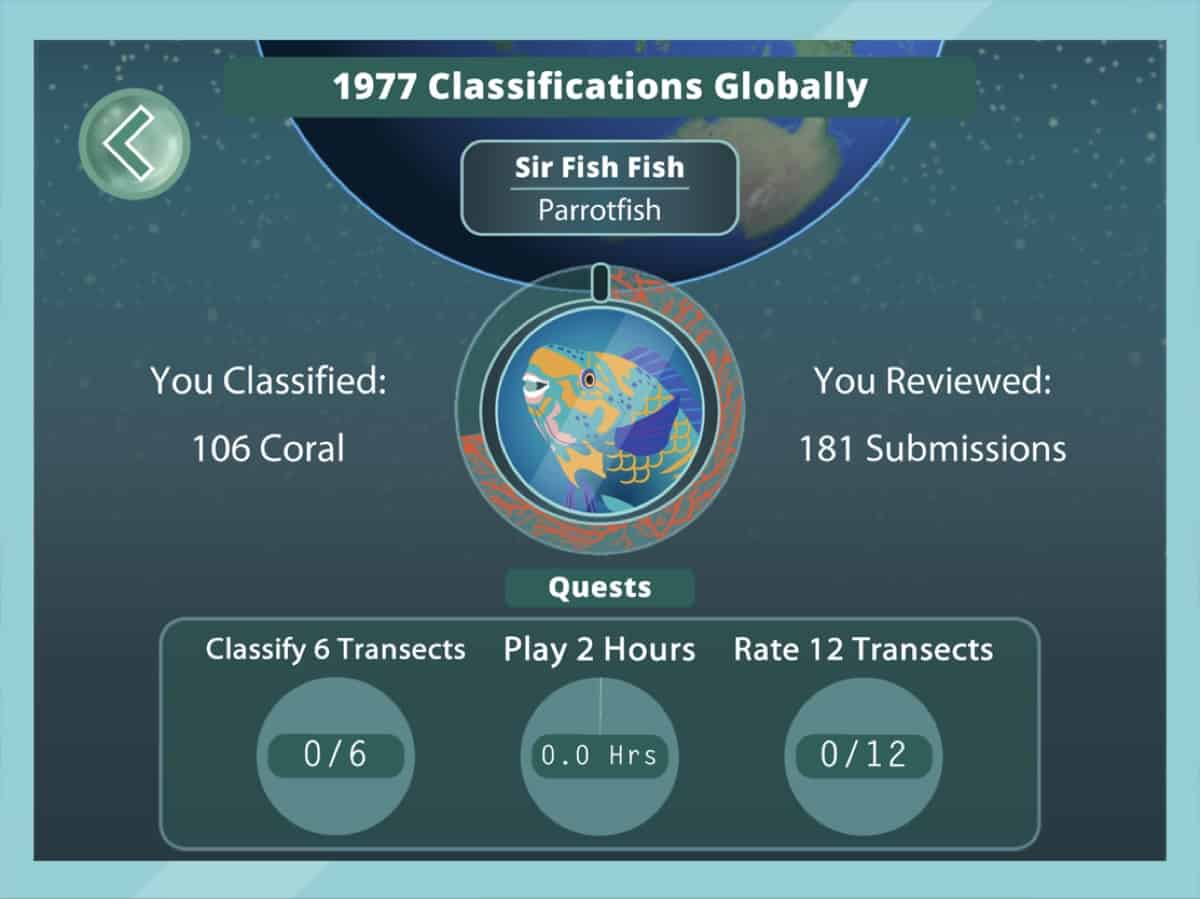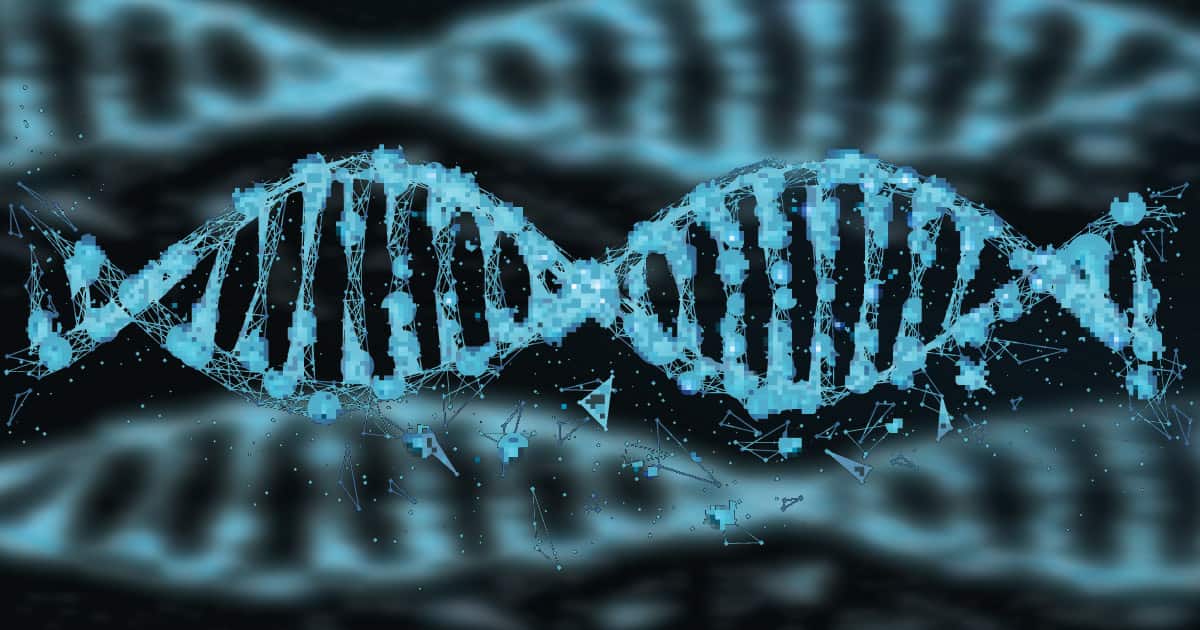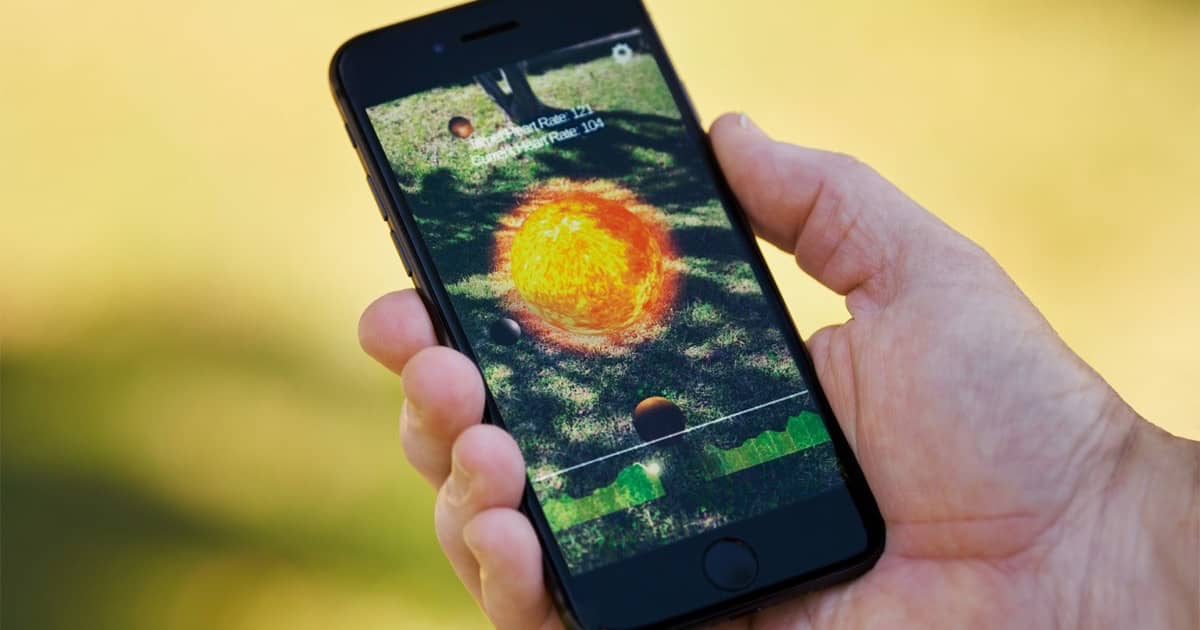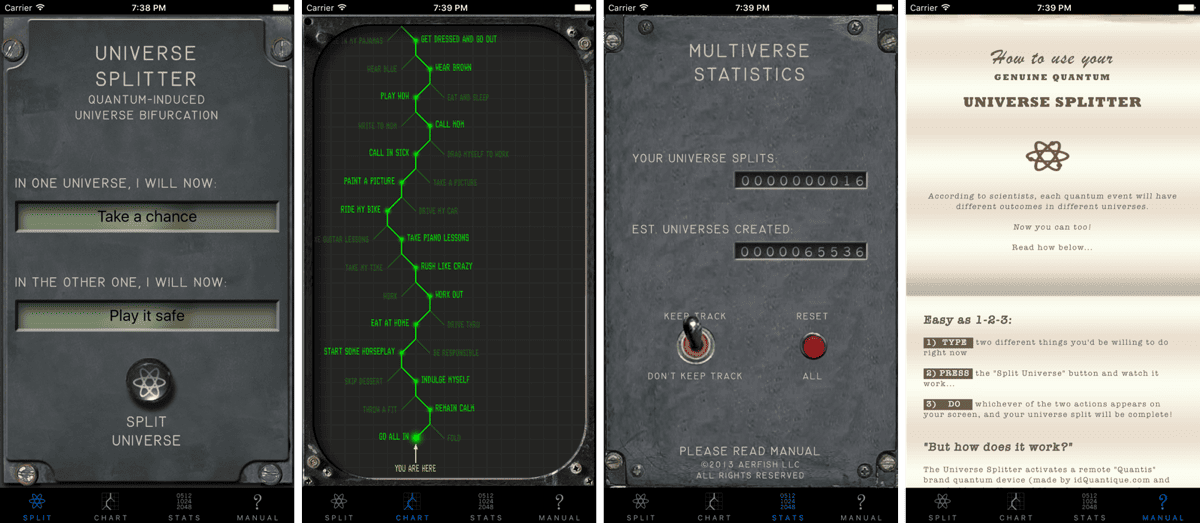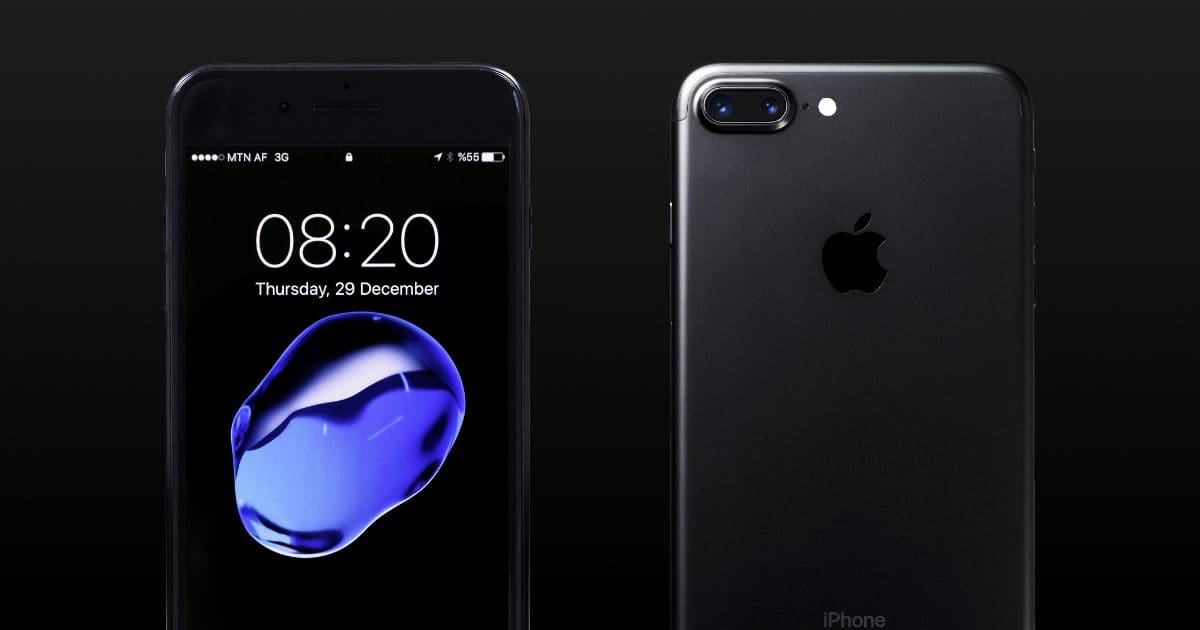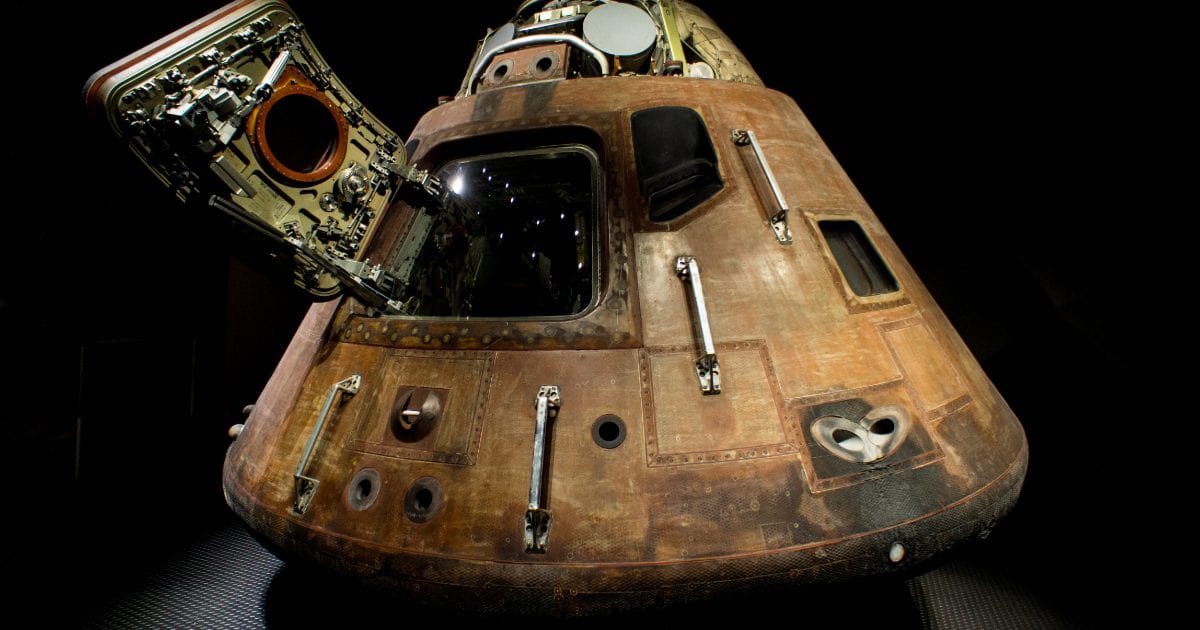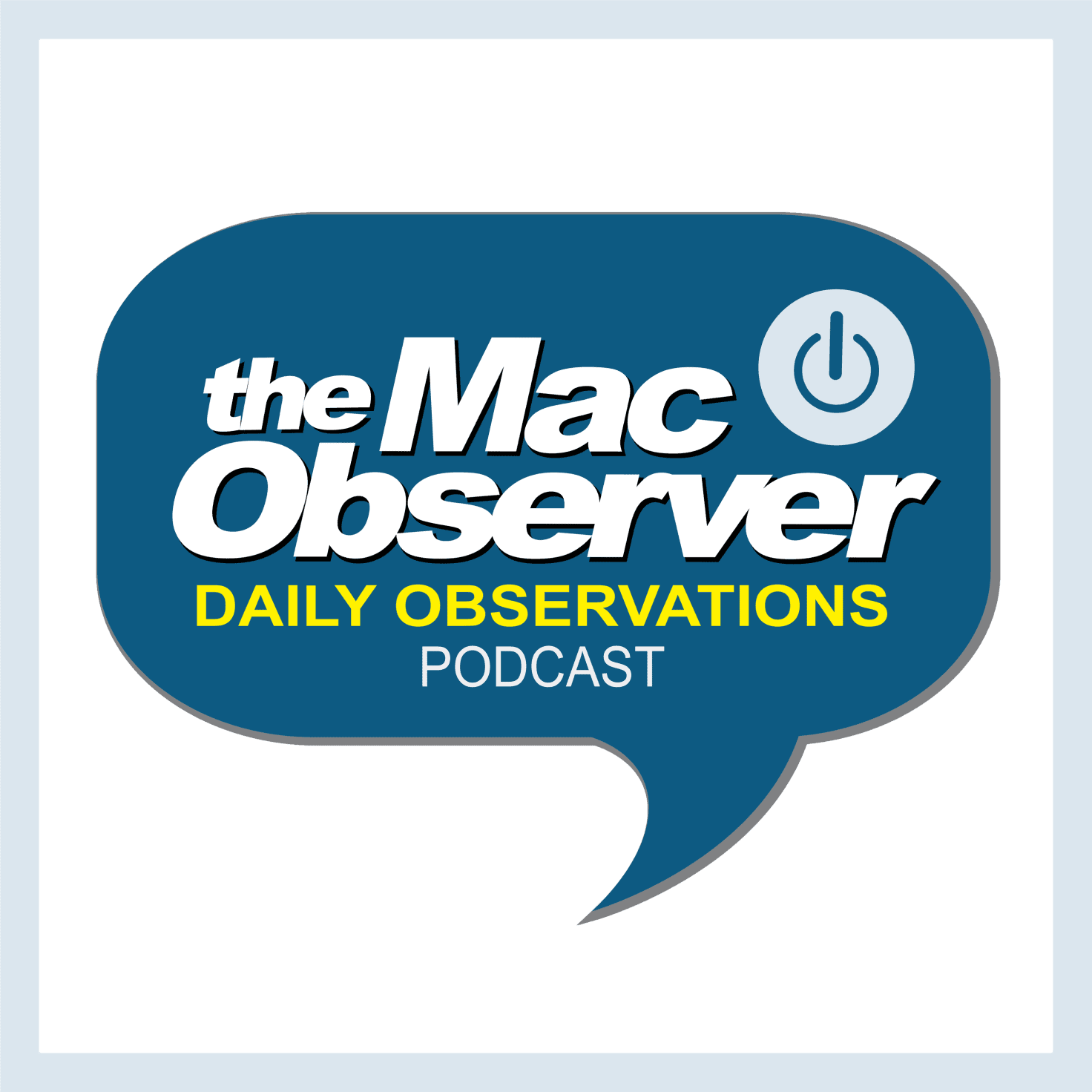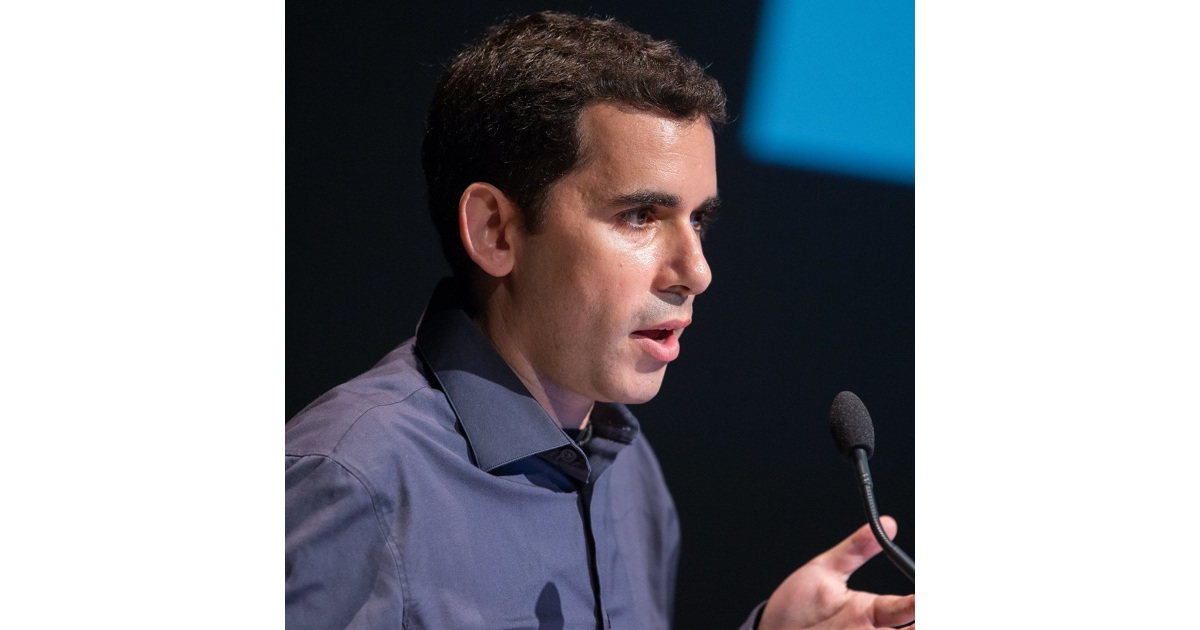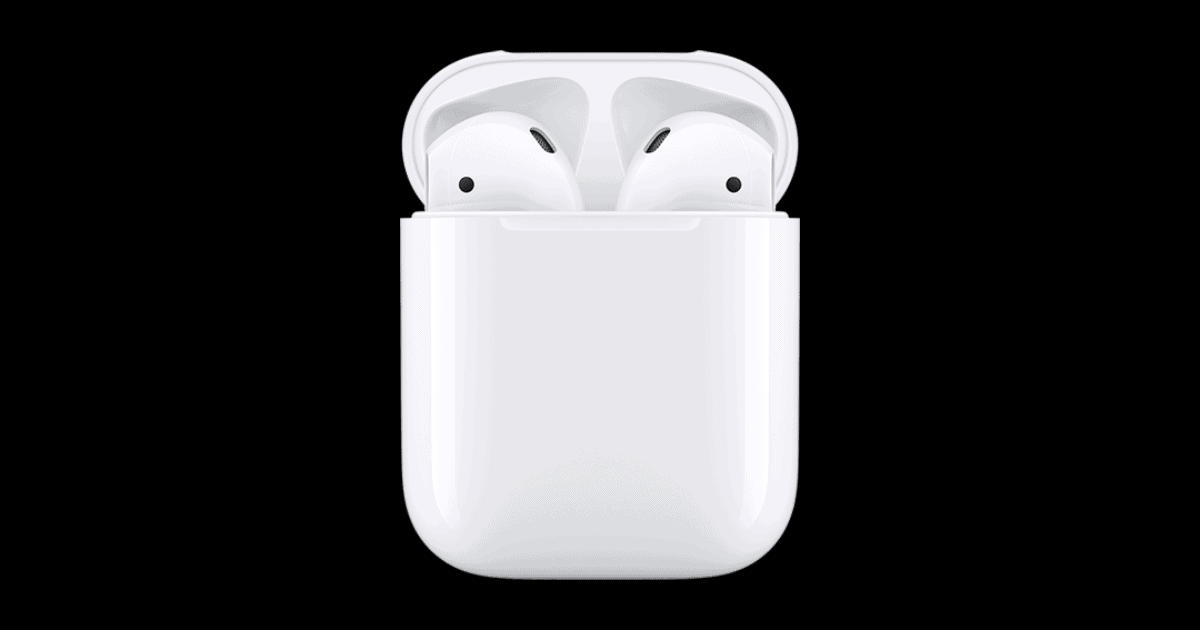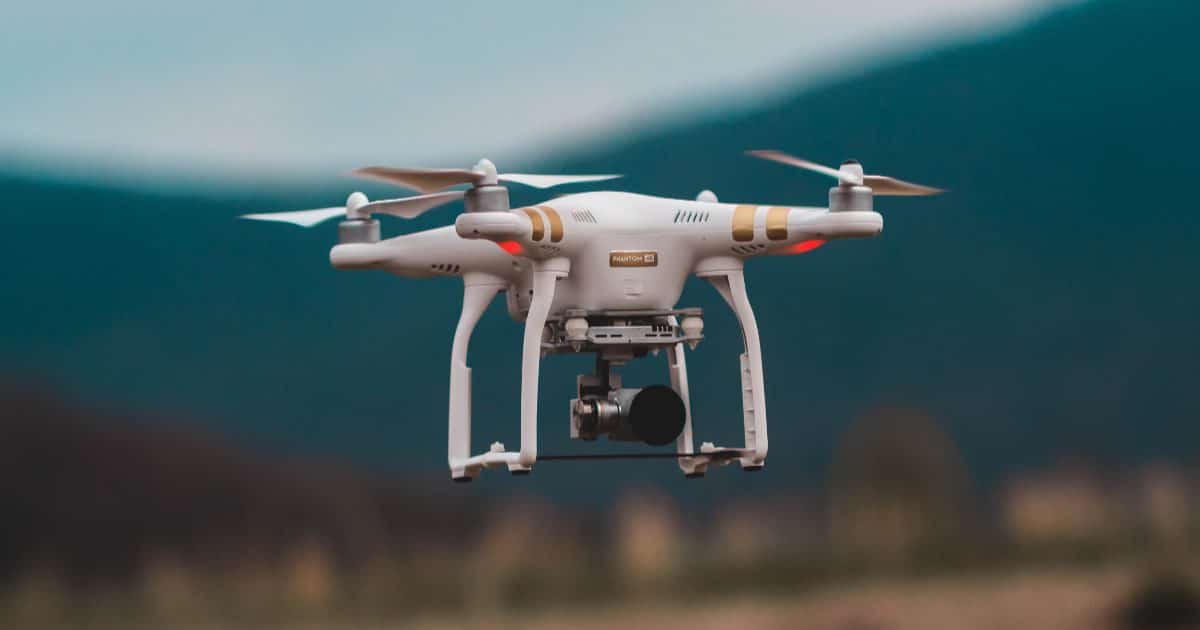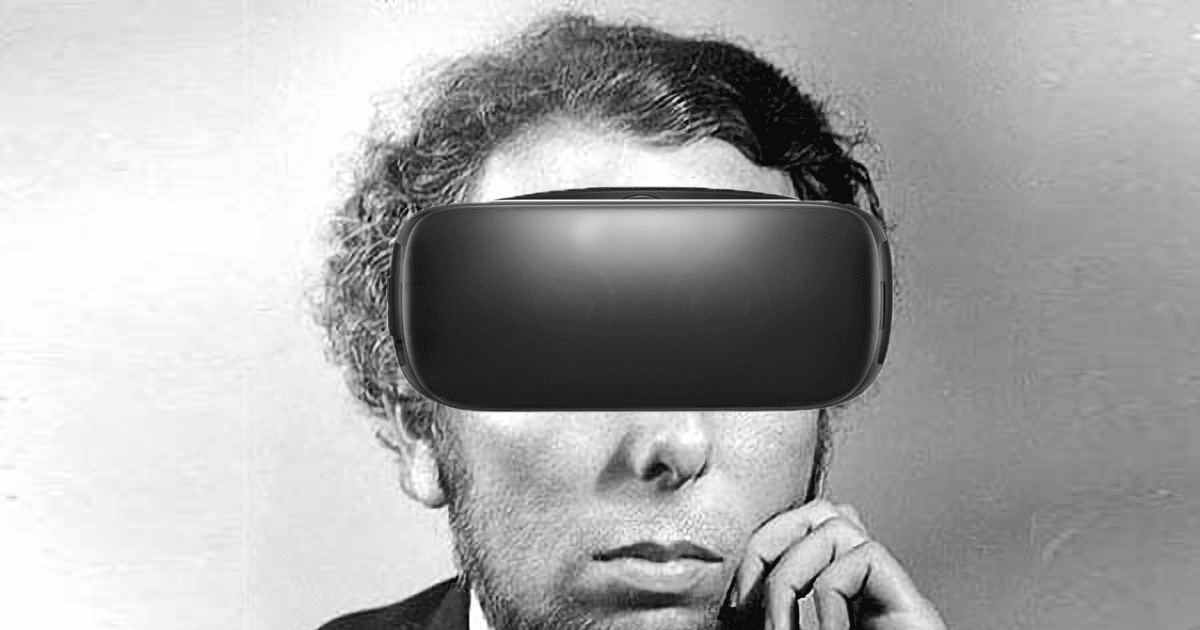NASA recently launched a game for iOS called NeMO-NET. In the game, players set forth with their ship Nautilus to scan the ocean floor. You identify and classify different types of corals, earn badges for completing missions, and watch educational videos about sea life. The data from the game is used to train NASA’s supercomputer called Pleiades, located at the Ames Research Center in Silicon Valley. The goal is for Pleiades to recognize corals from various scientific instruments so that the agency can map corals across the world. App Store: Free
Science
Science Communicator Dr. Kiki Sanford (#8) - TMO Background Mode Interview
Dr. Kiki Sanford makes her eighth appearance on Background Mode. Kiki is a neurophysiologist with a B.S. in conservation biology and a Ph.D. avian neurophysiology from the University of California. She’s a popular science communicator and creator/co-host of This Week in Science (TWIS) podcast and radio show.
In this episode, we spend the entire first segment discussing the coronavirus. Kiki fills us in on the details you don’t hear about on the nightly news. In segment #2, Kiki tells us the real reason why people under stress get grey hair, how Mars used to have surface water, how the Earth’s sea level is rising faster than expected, and how zebra strips seem to provide good protection against biting insects. As always, Kiki makes science fun and interesting.
A DNA Computer Just Computed Square Root of 900
Researchers at the University of Rochester created a computer that uses 32 DNA strands to store and process information. It can calculate the square root of square numbers 1, 4, 9, 16, 25 and so on up to 900.
To start, the team encodes a number onto the DNA using a combination of ten building blocks. Each combination represents a different number up to 900, and is attached to a fluorescence marker.
The team then controls hybridisation in such a way that it changes the overall fluorescent signal so that it corresponds to the square root of the original number. The number can then be deduced from the colour.
Humans Place in Suspended Animation for First Time
Humans have been placed in suspended animation for the first time, in a technique called emergency preservation and resuscitation (EPR).
EPR involves rapidly cooling a person to around 10 to 15°C by replacing all of their blood with ice-cold saline. The patient’s brain activity almost completely stops. They are then disconnected from the cooling system and their body – which would otherwise be classified as dead – is moved to the operating theatre.
A surgical team then has 2 hours to fix the person’s injuries before they are warmed up and their heart restarted. Tisherman says he hopes to be able to announce the full results of the trial by the end of 2020.
Years ago I remember reading in Popular Science of experiments like this involving dogs. It’s amazing that it’s moving to the human stage.
Facebook is Fine With Political Lies But Bans Pro-Vaccination Ads
Facebook is happy to let politicians lie in advertisements on the platform, but it bans pro-vaccination ads that are rooted in science.
The study, published today in the journal Vaccine…found that a small group of “well-connected, powerful people” promoting broad anti-vaccination messages had successfully leveraged the platform’s targeted advertising service to reach select audiences…Meanwhile, those behind pro-vaccine messages well far less well funded and centralised, with their advertising often focusing on inoculating against specific conditions.
How AR App Healium Helps Veterans Manage Anxiety
Apple shared the story of an AR app called Healium. It helps veterans manage their anxiety using a blend of storytelling, neuroscience, and game design.
Want to Help Train AI? Send This Company Pictures of Your Poop
A company called Seed wants to build a database of 100,000 poop photos so an AI can learn to tell the difference between healthy and unhealthy poop.
Ara Katz, co-founder and co-CEO of Seed, hopes that the poop project is just one of the company’s many future contributions to our understanding of health. “It’s projects like this [that] allow people who are not scientists to participate in citizen science. By crowdsourcing data, we can help researchers and technologies like auggi in order to help people identify different conditions.”
Take a poop pic and submit it at seed.com/poop.
Universe Splitter Lets You Play With Quantum Mechanics
Everett’s many worlds interpretation of quantum mechanics says that there is a single wave function for the entire universe, and at the moment of measurement, the universal wave function splits in two. You see one measurement, and the you in the other universe sees another measurement. Universe Splitter lets you play with this theory. Type two choices into the app. The app will split the wave function in two by activating a quantum device that will send a single photon into an “either/or” state. Then, the app will tell you which universe you’re in. Unfortunately, Many Worlds says that the universes can’t communicate with each other, so you’ll never be able to talk to your copies. App Store: Universe Splitter – US$1.99
Study Claims iPhone 7 Exceeds Radiation Limit
The Chicago Tribune claims that its study of iPhone 7 and other smartphones exceed the safety limit for cellphone radiation. Using a “tub of clear liquid, specially formulated to simulate human tissue” it found radiation exposure from the iPhone 7 was more than double what Apple reported from its own testing. Apple disputes the study, and the FCC will conduct further studies.
Cellphones use radio waves to communicate with a vast network of fixed installations called base stations or cell towers. These radio waves are a form of electromagnetic radiation, in the same frequency range used by TVs and microwave ovens.
This kind of radiation, also known as radiofrequency energy, shouldn’t be confused with ionizing radiation, such as gamma rays and X-rays, which can strip electrons from atoms and cause serious biological harm, including cancer.
Of course, there is no conclusive evidence that non-ionizing radiation is powerful enough to have a measurable effect on the human body. John Kheit and I agree to disagree 😉
Science Communicator Dr. Kiki Sanford (#7) - TMO Background Mode Interview
Dr. Kiki Sanford makes her seventh appearance on Background Mode. Kiki is a neurophysiologist with a B.S. in conservation biology and a Ph.D. avian neurophysiology from the University of California. She’s a popular science communicator and creator of This Week in Science (TWIS) podcast and radio show.
In this episode, we chat about Elon Musk’s Neuralink, Tardigrades on the Earth’s moon, how Dark Matter may have actually preceded the Big Bang, how older parents tend to have children with fewer behavior problems, the latest findings from the exoplanet hunter, TESS, the Transiting Exoplanet Survey Satellite, and, finally, how climate change is affecting the size of some birds. Dr. Kiki is always a delight to listen to and learn from.
Future Historian Steve Carper - TMO Background Mode Interview
Steve Carper is a Future Historian, researching how the dazzling future that dominated the Golden Age of science fiction was created—starting with the technological frenzy of the late 19th century.
Steve writes a bi-weekly robot column at BlackGate.com and his latest book, published in June 2019, is Robots in American Popular Culture. This book examines society’s reactions to robots and androids such as Robby, Rosie, Elektro, Sparko, Data, WALL-E, C-3PO and the Terminator in popular culture.
Steve and I discussed his new book, covering some of the most famous robots of fiction and then all aspects of robot technology in our culture: robots as servants, enemies, lovers, children, successors and doubles. Where will the evolution of robots take our society next? Klaatu barada nikto.
The 5G 'Health Hazard' Was a Misinterpretation
In 2000 a physicist was asked to study the health risks of wireless networks. He found [PDF] that there “was likely to be a serious health hazard.” Except he was wrong.
In his research, Dr. Curry looked at studies on how radio waves affect tissues isolated in the lab, and misinterpreted the results as applying to cells deep inside the human body. His analysis failed to recognize the protective effect of human skin. At higher radio frequencies, the skin acts as a barrier, shielding the internal organs, including the brain, from exposure. Human skin blocks the even higher frequencies of sunlight.
Despite all the studies showing a link between smartphones and cancer being debunked, I don’t think this idea will ever go away.
iPhones Have 100,000 Times More Processing Power Than Apollo 11 Computer
iPhones have over 100,000 times more processing power than the Apollo 11 computer; with 4GB of RAM they have over a million times more memory, and with 512GB of storage they have over seven million times more storage.
Despite the rapid technological advances since then, astronauts haven’t actually been back to the moon since 1972. This seems surprising. After all, when we reflect on this historic event, it is often said that we now have more computing power in our pocket than the computer aboard Apollo 11 did. But is that true? And, if so, how much more powerful are our phones?
It’s amazing to see how far technology has advanced since then.
Science and Macs, Mozilla's Track THIS – TMO Daily Observations 2019-06-27
Andrew Orr and John Martellaro join host Kelly Guimont to discuss the Mac’s value to scientists and the new tracking project from Mozilla.
That Study Showing Kids Sprouting Horns is Probably Bogus
Beth Mole reminds us that scientific studies are more nuanced than a sensationalized news story. The Washington Post wrote about a study showing kids sprouting horns because of bad posture, and phones were to blame. But it’s probably bogus.
Perhaps the most striking problems are that the study makes no mention of horns and does not include any data whatsoever on mobile devices usage by its participants who, according to the Post, are growing alleged horns. Also troubling is that the study authors don’t report much of the data, and some of the results blatantly conflict with each other.
TMO Background Mode Interview with Science Historian Dr. Matthew Stanley
Dr. Matt Stanley is a teacher and researcher in the history and philosophy of science. He holds degrees in astronomy, religion, physics, and the history of science and is interested in the connections between science and the wider culture. His Ph.D. is from Harvard in the history of science, and he is currently a professor at New York University.
We chatted about how Matt came to be immersed in physics as well as the history of science and religion. He found that a proper modern perpective depends on an understanding of how science evolved throughout history. We also briefly touched on how science and religion don’t really contradict each other. Matt told me about a very interesting class he teaches, his podcast “What the If,” and his new book EINSTEIN’S WAR: How Relativity Conquered the World.
App Usage Can Predict Cognitive Decline in Older Adults
An Apple research paper called “App Usage Predicts Cognitive Ability in Older Adults” says that iPhone usage can help predict cognitive decline in older adults [PDF].
To characterize smartphone usage among older adults, we collected iPhone usage data from 84 healthy older adults over three months. We find that older adults use fewer apps, take longer to complete tasks, and send fewer messages. We use cognitive test results from these same older adults to then show that up to 79% of these differences can be explained by cognitive decline, and that we can predict cognitive test performance from smartphone usage with 83% ROCAUC. While older adults differ from younger adults in app usage behavior, the “cognitively young” older adults use smartphones much like their younger counterparts. Our study suggests that to better support all older adults, researchers and developers should consider the full spectrum of cognitive function.
TMO Background Mode Interview with Cosmologist Dr. Andrew Friedman
Dr. Andrew Friedman is an astronomer, cosmologist, and data scientist. He’s currently an NSF funded Assistant Research Scientist at the University of California at San Diego Center for Astrophysics & Space Sciences. He is also a Research Affiliate in the MIT Program in Science, Technology and Society. He holds a Ph.D. in Astronomy and Astrophysics from Harvard.
We chatted about how science fiction inspired him as a youth to become a cosmologist. Also, how important it is to have a Ph.D. thesis advisor who’s enthusiastically supportive. Then, we got into some cool topics of cosmology: using Type Ia supernovae to measure the rate of expansion of the universe, why infrared observations of those stars are helpful, whether quantum entanglement suggests a substrate on which spacetime resides, the multiverse, and the implications of the Planck length and Higgs field for our very existence.
It Turns Out That Science Petition Wasn’t Warning About AirPods
Remember that science petition going around that 250 scientists signed, warning about AirPods and cancer? Turns out it had nothing to do with AirPods.
So rather than finding any link between cancer or other issues in levels of EMF at or below the current, accepted regulations, the scientists involved here were simply asking for more research into to area and suggested that it was probably a good idea to limit human exposure.
Various bloggers picked up the subject and worked to associate it with Apple’s AirPods…without regard for the fact that nothing in the petition even suggested concern about in-ear headphones, Bluetooth, or AirPods.
Botanists Use Drone to Find Flower Thought Extinct: Hibiscadelphus woodii
How about some wholesome news for once? Recently, botanists in Hawaii used a drone to find a flower they thought was extinct: Hibiscadelphus woodii.
During the expedition that led to the rediscovery of H. woodii, Wood and Nyberg had hiked hundreds of feet down the Kalalau Valley cliffs, but the difficult terrain prevented them from going any further.
It was then that Nyberg deployed the drone, flying it further down the cliffs, toward the sea, to take a closer look at a specific area of interest. Able to get within a meter or two of the sheer cliff face, he was able to confirm the continued existence of H. woodii.
A VR Version of Milgram’s Shocking Experiment
Stanley Milgram’s most famous experiment involved taking random people and telling them to electrocute someone who they thought got wrong answers on a quiz. Now there’s a virtual reality version, and the results prove insightful.
During the experiment, participants quizzed a virtual character. A correct answer meant they could move on, while an incorrect answer meant the human participant had to administer a virtual electrical jolt. The scientists noticed that participants sometimes tried to feed the virtual avatar the correct answer by pronouncing it louder — in hopes that they wouldn’t be told to shock them.
Use iNaturalist to Identify Flora and Fauna
I’ve used iNaturalist for a couple years and think it’s a great tool. Two features that help the app stand out from competitors are 1: The machine learning it uses. Once you take a picture, it can automatically suggest what species you’re looking at. 2: With every photo you upload and tag with location and other metadata, you’re contributing to real science. iNaturalist shares data with scientific data repositories like the Global Biodiversity Information Facility.
The app is a joint initiative between The California Academy of Sciences and the National Geographic Society and works sort of like a Shazam for Nature in that it lets you snap a shot of something you come across and instantly get an answer for what that planet, animal, or bug might be.
Scientists Say AirPods May be Linked to Cancer
Over 250 are signing a petition calling on the United Nations and World Health Organization to create stronger guidelines over devices like AirPods and possible links to cancer.
Some experts believe that AirPods may be especially dangerous since the devices sit deep inside the ear canal where they emit radiation to fragile parts of the ear. The scientists also noted other possible health hazards, including an increase in harmful free radicals, genetic damages, structural and functional changes of the reproductive system, learning and memory deficits, and neurological disorders.
Further reading: PSA: Wi-Fi Doesn Cause Cancer, Some Guidelines on how to Spot Bad Science.
TMO Background Mode Encore #6 Interview with Science Communicator Dr. Kiki Sanford
Dr. Kiki Sanford makes her sixth appearance on Background Mode. Kiki is a neurophysiologist with a B.S. in conservation biology and a Ph.D. avian neurophysiology from the University of California. She’s a popular science communicator and creator of This Week in Science (TWIS) podcast and radio show.
In this episode, we chat about the science of rising sea levels, neural networks and vocoder technology trained to recognize brain patterns related to listening to human speech, how learning two human languages in childhood positively affects the brain, rebooting the human immune system, whether intelligence is sexy, and the colonization of Mars and whether it will be commercially exploited or preserved by all nations like the Earth’s Antarctic. Dr. Kiki is always a delight to listen to and learn from.
